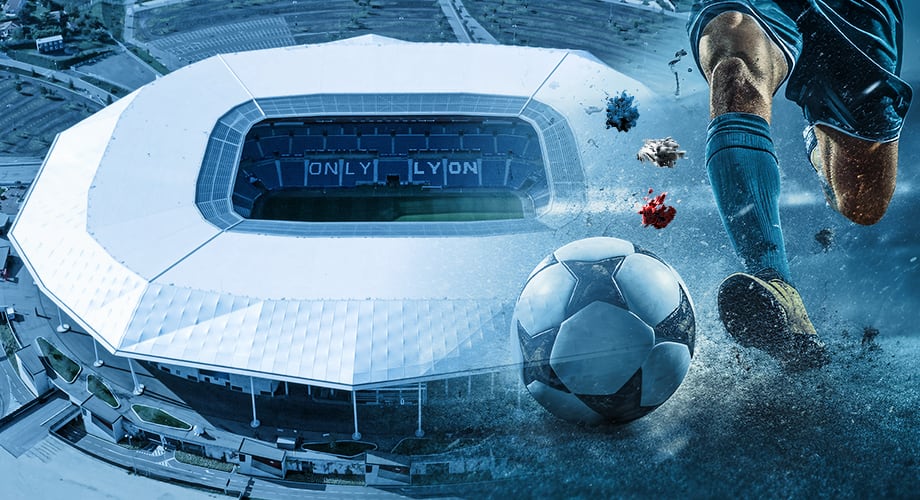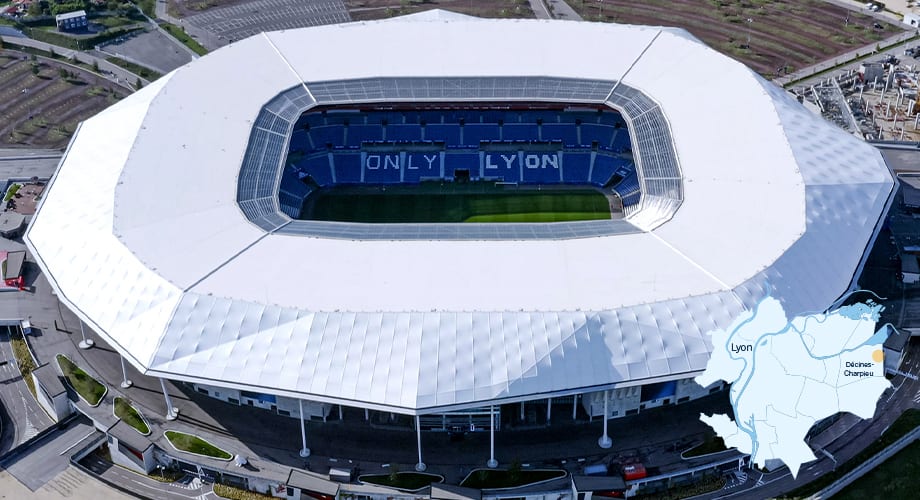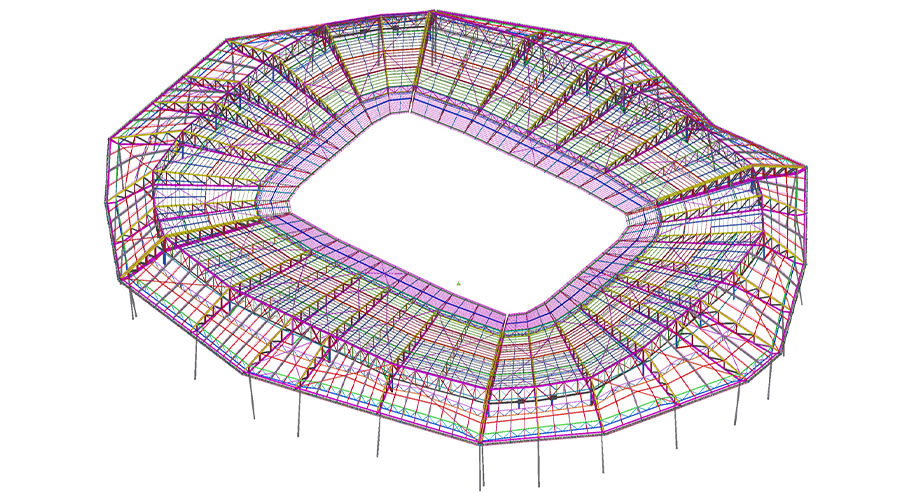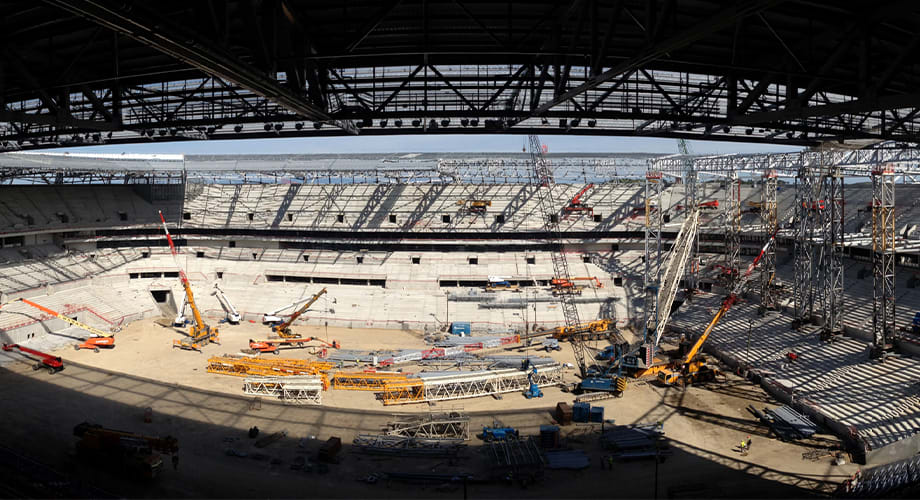Groupama Stadium: the architectural challenge behind the Gones stadium

Groupama Stadium is home to the football club Olympique Lyonnais, known locally as Les Gones (The Kids). As an iconic sports venue, the ultra-modern stadium has been a source of pride for the people of Lyon since 2016 and is set to welcome the world’s best footballers during the summer of 2024. Jaillet-Rouby looks back at this architectural and technical challenge.
About the Groupama Stadium project
Located in Décines, to the west of Lyon, the Groupama Stadium is crowned by a roof that houses the stands and forecourt, providing a shady, comfortable atmosphere while guaranteeing an optimum view of the pitch for all spectators.
The steel frame that supports the stadium's membrane roof cover includes three complementary parts: an outer ring, an opaque inner ring and a translucent inner ring. Each of them playing a crucial role in the functional whole.
The Groupama Stadium in numbers
- A steel frame roof structure of 56,000 sqm
- 7,000 tonnes of steel
- 8,000 sqm of available space

A specialist in the design and studies of complex structures
The firm Jaillet-Rouby was entrusted with the design of the steel structure from the preliminary study phase through to the execution study phase. This implementation study included the design of the structure bearing the PVC membrane that gives the stadium its emblematic appearance.
"The complex geometry of the roof meant that we had to move very quickly to the 3D modelling phase in order to validate the feasibility of the architectural project."
Najah Ayoub, Director and partner at Jaillet-Rouby office
Identifying BIM requirements
BIM, imposed by the requirements of the project specifications, proved to be an asset in resolving the challenges encountered throughout the project.
- Schedule management, tight deadlines were met.
- Intensive collaboration involving several architects and engineering offices (350 companies in all).
- Compliance with architectural constraints relating to the shape of the site, in particular the complex geometry of the roof (60 meter overhang).
- Adaptation to topographical constraints, in particular the region’s seismic risk.

Project phases
-
Opening of the call for projects.
-
Selection of the project management team in which Jaillet-Rouby participated for the design of all the stadium’s steel structure.
-
Delivery of the architectural draught.
-
Predimensioning phase: launch of the first calculations and 3D models of the steel structure in Tekla Structures.
-
Validation of support points by civil engineers on the basis of initial models.
-
Delivery of models to MEP and concrete engineering offices via IFCs and iterations to adjust the models.
-
Delivery of revised models to begin the fabrication of the steel structure.
-
Checking assemblies and final revision of 3D models.
The 3D models helped to manage the breakdown of the structure imposed by the location of the site and the lifting system adopted during the construction phase.

Jaillet-Rouby used Trimble for:
Simplified workflows
- Optimises the time taken to manufacture parts and assemble them on site.
- Reduces the risk of error.
Maintenance and life monitoring of the building
-
Provides greater precision on mock-ups, making it easier to understand the design and simplifying the work of other trades.
-
Particularly useful for fixing projectors or screens and replacing them on the steel structure.
Better collaboration between teams
-
Provides instant access to the same data for all stakeholders.
-
Facilitates information sharing and iterations via the IFC.
Interoperability with other solutions on the market
-
Connects to all the other BIM tools on the market via simplified data sharing (IFC) and a host of functional gateways.
-
Facilitates collaboration with all project stakeholders.
"This was a highly demanding project involving architectural, technical, structural and seismic constraints, BIM helped us to manage this complexity."
Najah Ayoub, Director and partner at Jaillet-Rouby office